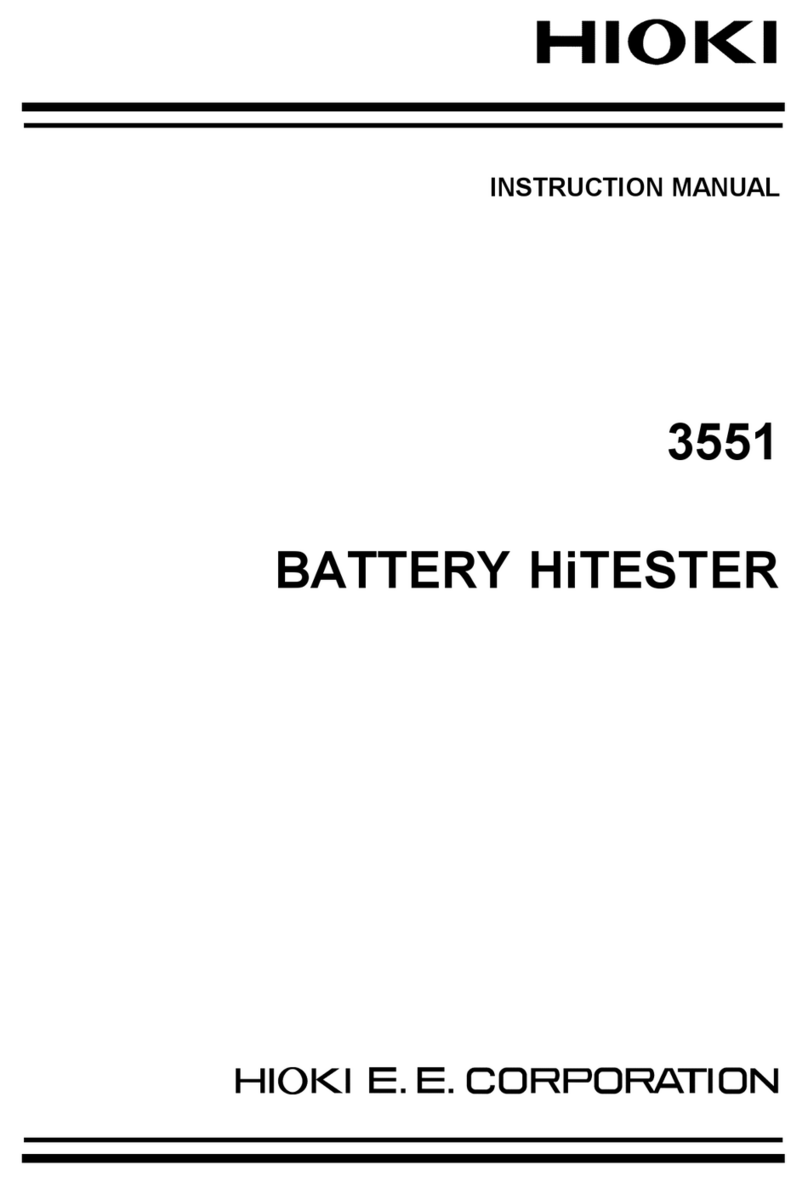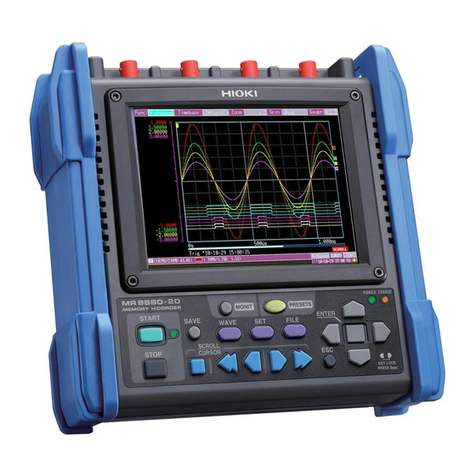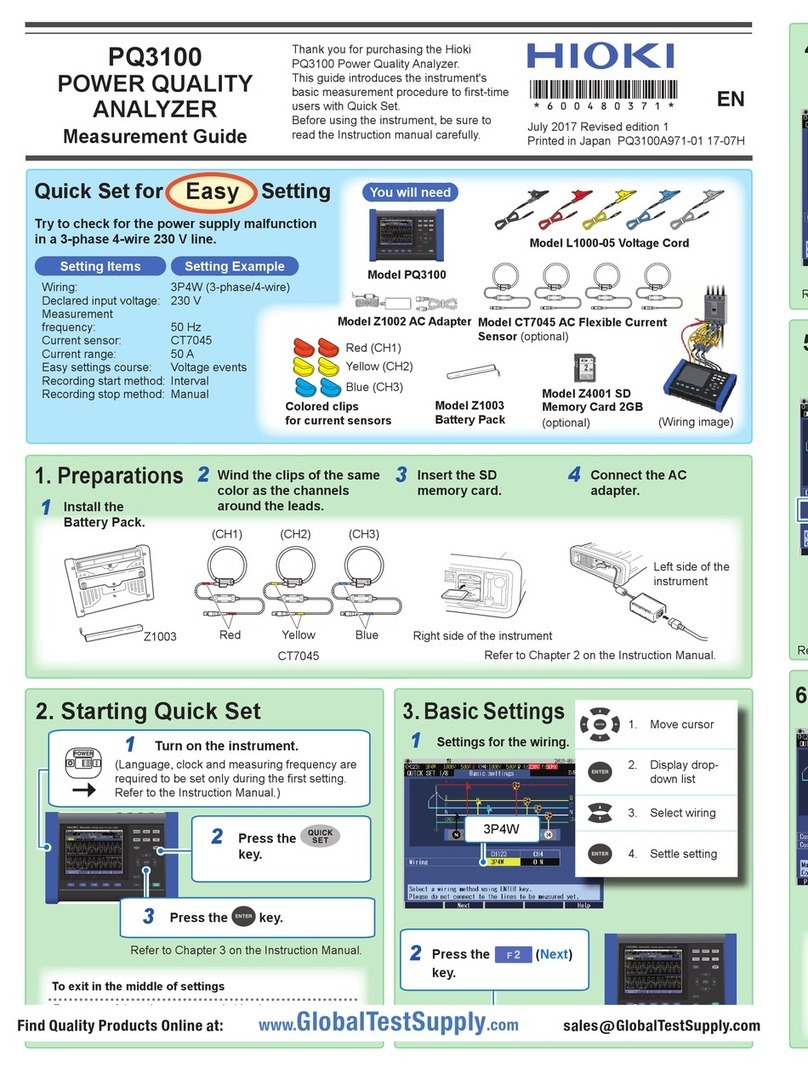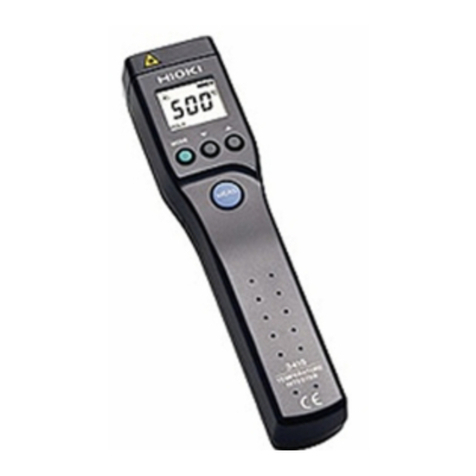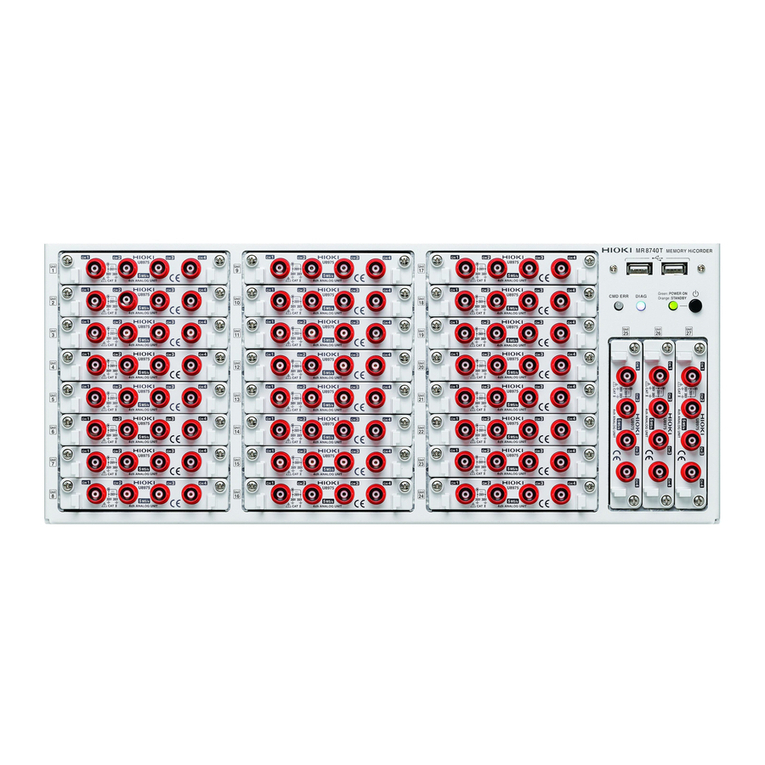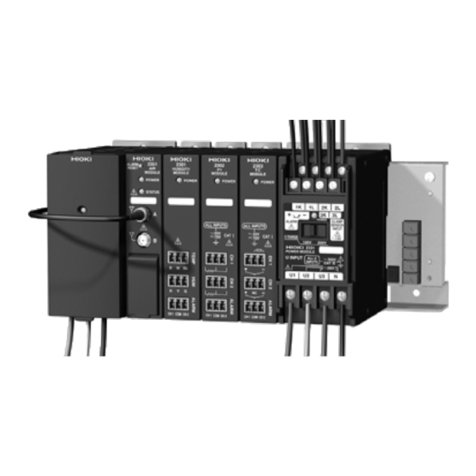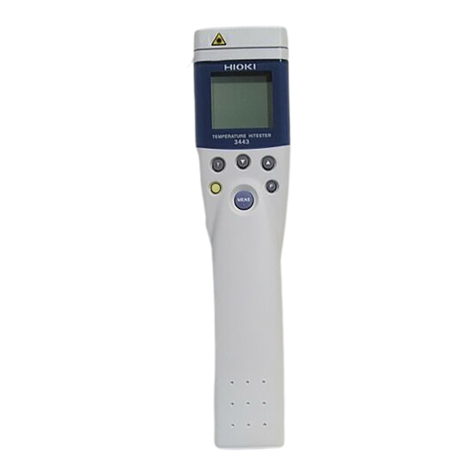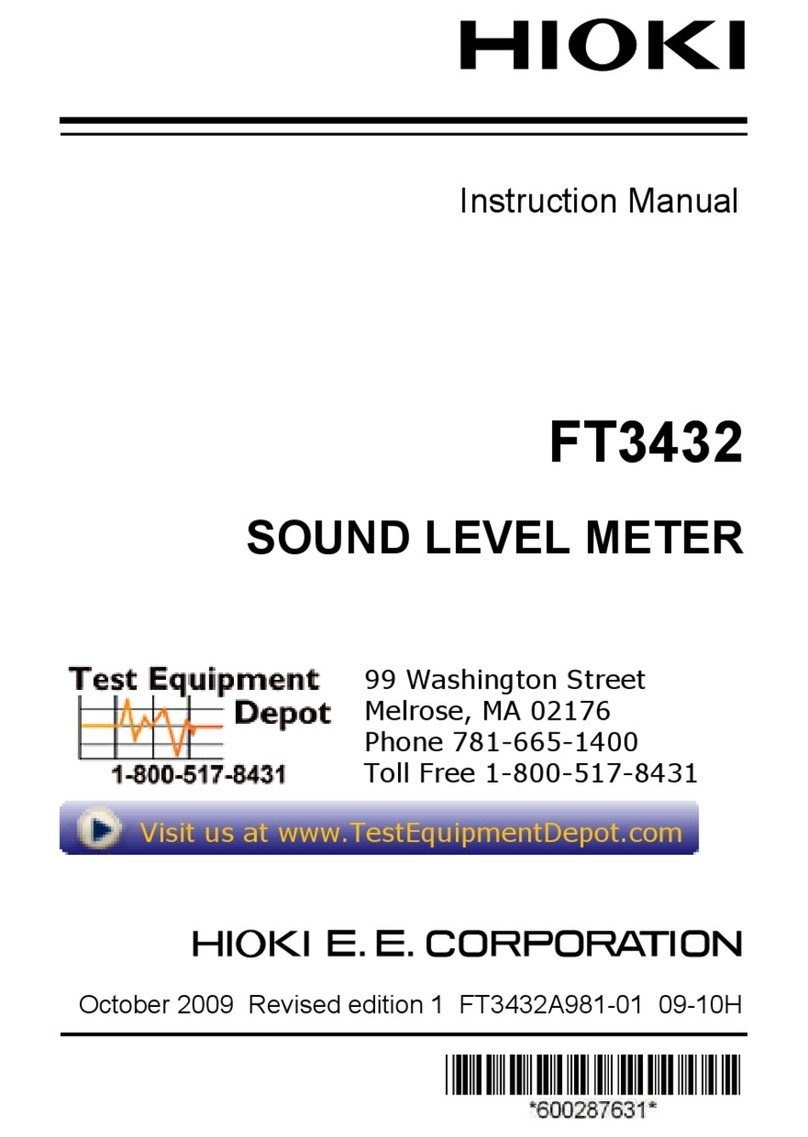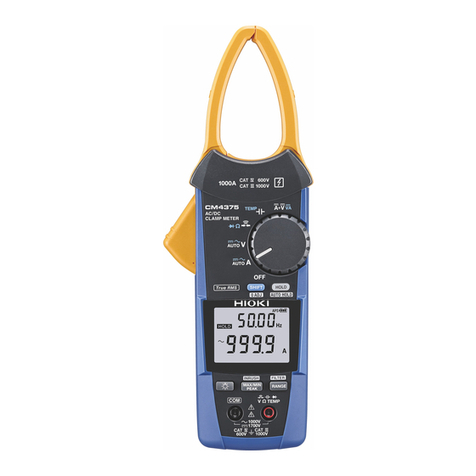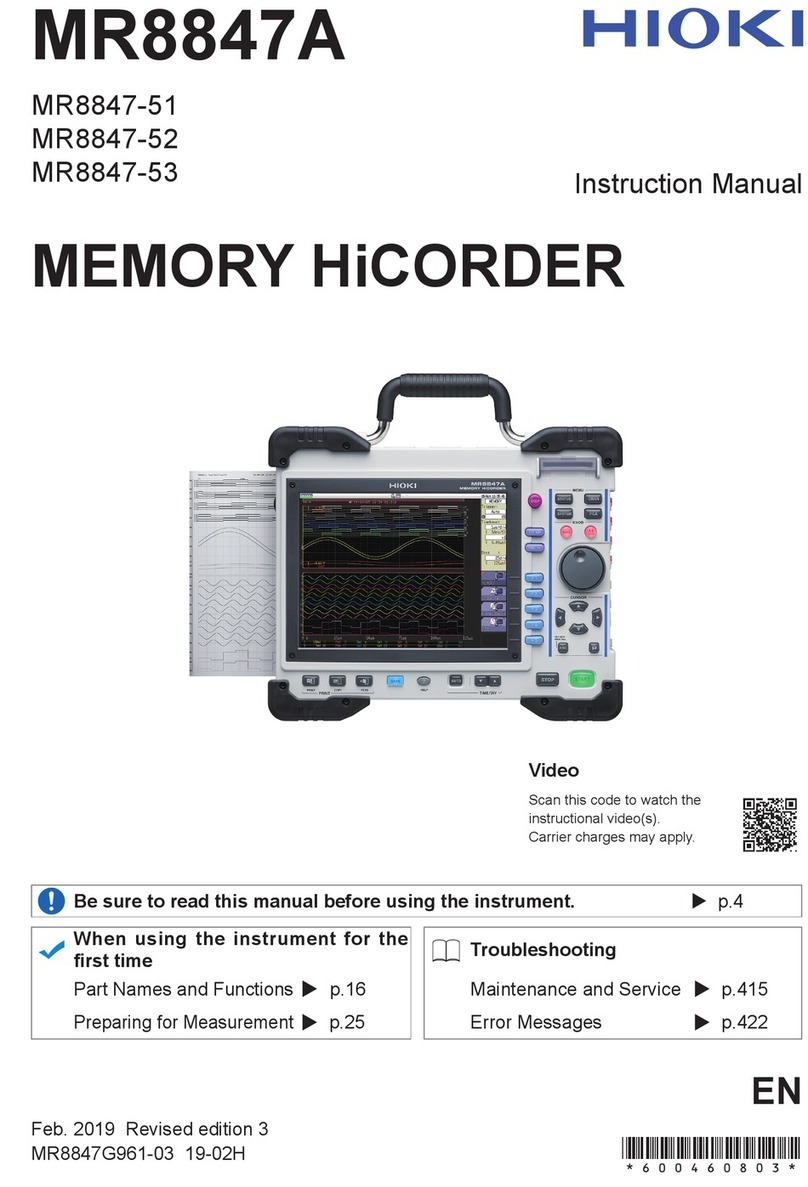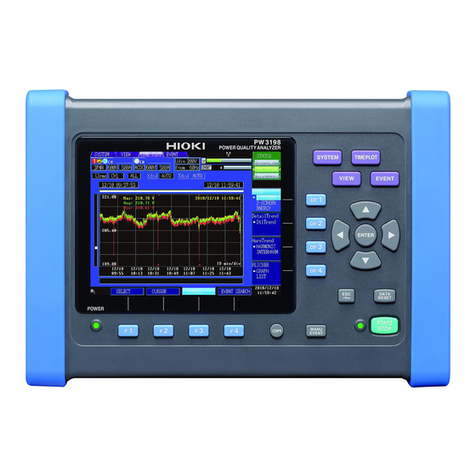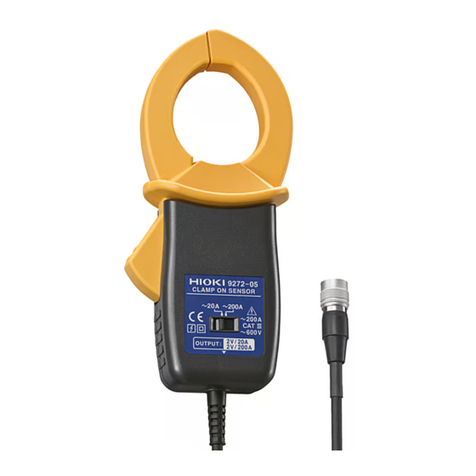
Contents
ii
3.5 Setting Sampling Rate ...................................................... 30
3.6 Zero-Adjust Function ........................................................ 31
Wiring Method for Zero-Adjustment .................................... 31
Executing Zero-Adjustment ................................................ 31
3.7 Displaying Measurement Results ..................................... 34
Measurement Fault Detection ............................................ 35
Overflow Display ................................................................. 36
Chapter 4
Applied Measurement _______________________37
4.1 Comparator Function ........................................................ 38
Comparator Setting Example 1
(Upper and Lower Threshold Judgment) ........................... 39
Comparator Setting Example 2
(Reference Value and Tolerance Judgment) ...................... 43
Comparator Judgment Beeper Setting ............................... 48
Comparator Execution Mode Setting .................................. 48
Comparator Threshold Method Selection ........................... 49
Upper and Lower Thresholds Setting
(by Reference Value and Tolerance) .................................. 50
Configuring the Absolute Value Judgment Function
(Voltage) ............................................................................. 51
Enabling and Disabling the Comparator Function .............. 52
Comparator Judgment Results ........................................... 53
Switching Between Measurement Value and Comparator
Setting Displays .................................................................. 54
4.2 Trigger Function ................................................................ 55
Trigger Source Settings ...................................................... 55
Trigger Delay Settings ........................................................ 56
4.3 Measurement Current Pulse Output Function .................. 57
4.4 Averaging Function ........................................................... 59
4.5 Statistical Calculation Functions ....................................... 60
4.6 Memory Function .............................................................. 64
4.7 Key-Lock Function ............................................................ 66
4.8 Panel Save Function ......................................................... 67
4.9 Panel Load Function ......................................................... 68
4.10 Self-Calibration ................................................................. 69
4.11 Measurement Value Output Function ............................... 70
4.12 Key Beeper Setting ........................................................... 71
4.13 Reset Function .................................................................. 72
Chapter 5
External Control (EXT I/O) ____________________ 75
5.1 Overview........................................................................... 75
5.2 Signal Descriptions ........................................................... 76

